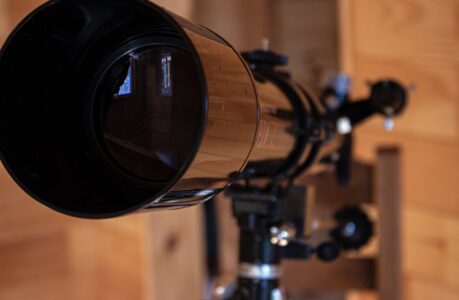Astronomy is a fascinating and captivating field that has been around for centuries. It’s a field that continues to evolve, with advancements in technology and new discoveries being made every day. One of the key components of a telescope is the aperture, and it has a significant impact on the quality of the images and observations made. In this article, we’ll be exploring the importance of telescope apertures and how they affect astronomy.
Aperture refers to the size of the opening in the front of the telescope that allows light to enter. The larger the aperture, the more light is collected and the better the image quality. This means that larger apertures allow for more detail to be observed in objects and provide clearer and brighter images. With the help of the aperture, astronomers are able to observe distant objects with incredible detail and clarity.

The aperture is an important factor in determining the ability of a telescope to resolve detail and resolve faint objects. A larger aperture allows for more light to enter the telescope, which results in a brighter and clearer image. The increased light gathering power of a larger aperture also allows for more detail to be seen in distant objects. This is especially important for astronomers who are observing objects that are faint, such as distant galaxies and stars.
There are a number of factors that go into determining the size of the aperture in a telescope. The first is the design and construction of the telescope itself. Some telescopes are designed to have a larger aperture, while others are designed to be more compact and portable. The second factor is the size of the mirror or lens that is used to collect light. The larger the mirror or lens, the larger the aperture can be.
One of the key advantages of larger apertures is their ability to resolve faint objects. This means that astronomers are able to observe objects that are faint and difficult to see with smaller telescopes. For example, a larger aperture allows for more light to be collected, which means that astronomers can observe distant galaxies and stars that are too faint to be seen with a smaller telescope.

Another important factor to consider is the cost of a telescope. Larger apertures typically come at a higher cost than smaller ones. This means that astronomers who are on a budget may need to compromise on aperture size in order to stay within their budget. However, it’s important to keep in mind that the investment in a larger aperture can pay off in the long run, as it allows for more detail and brighter images to be observed.
In conclusion, telescope apertures play a critical role in astronomy and the quality of the images and observations made. A larger aperture allows for more light to be collected, which results in brighter and clearer images. It also allows for more detail to be seen in distant objects, making it an essential component for astronomers. While cost is a factor to consider, the investment in a larger aperture can pay off in the long run, as it provides a clearer view of the universe.

